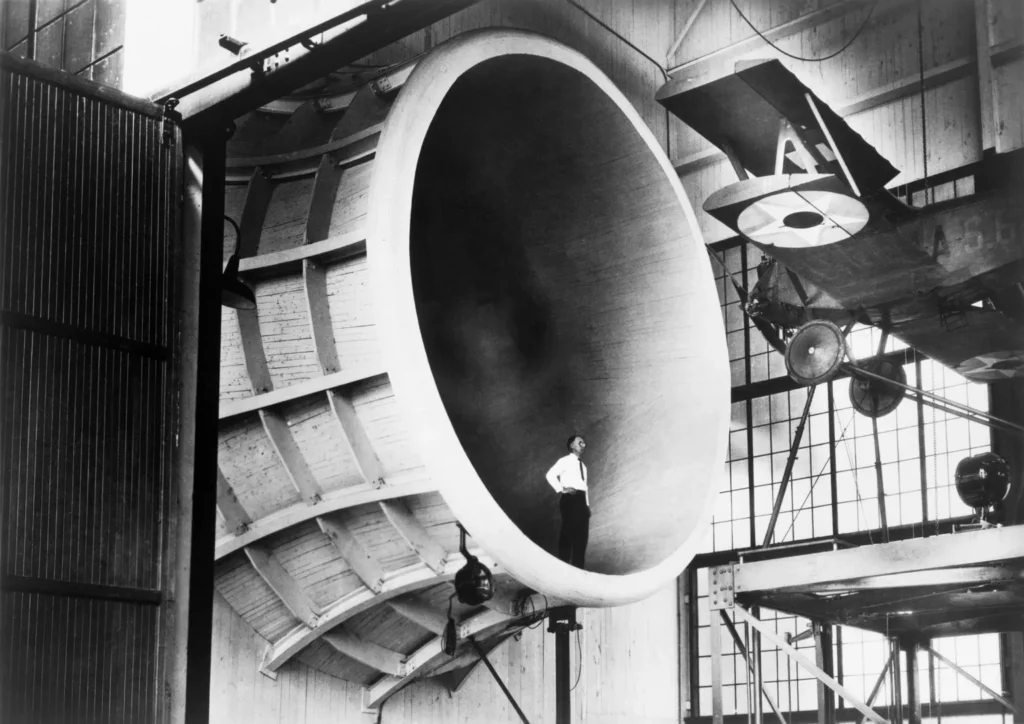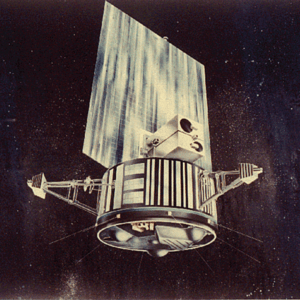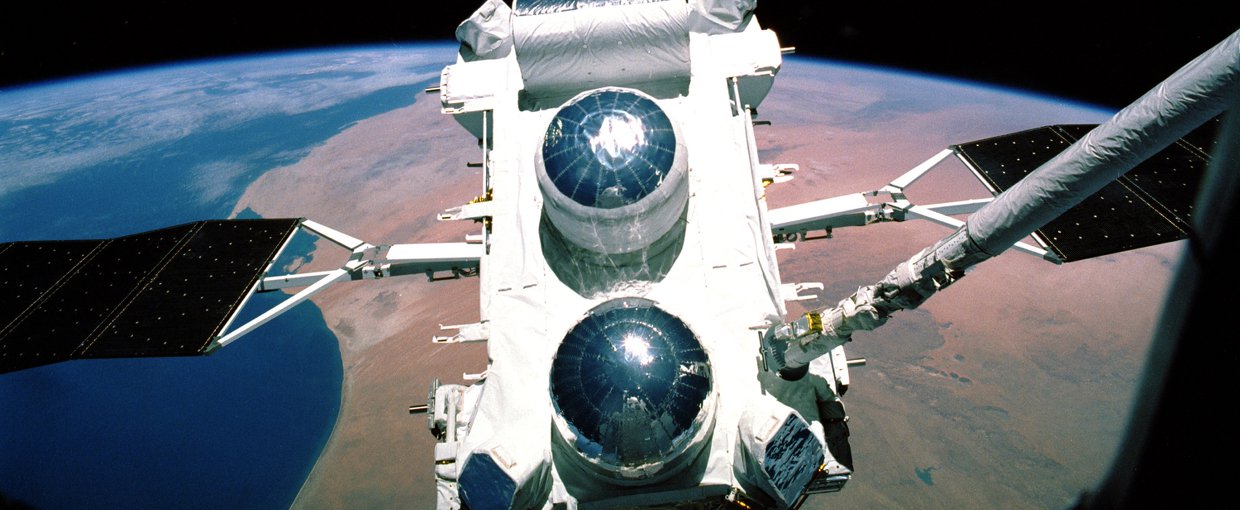Stay Up to Date
Submit your email address to receive the latest industry and Aerospace America news.
1925
June 1 — In a bid to extend airmail reach across colonial routes, France inaugurates an air-mail service linking its southwestern city of Toulouse and Dakar, Senegal. This 4,300-kilometer corridor stretches through Spain, Morocco and into West Africa and can be flown in two and a half days — cutting at least a week off the journey by ship. French aviation author Antoine de Saint-Exupéry later chronicled these and other routes in his famous anthology, “Airman’s Odyssey.” Flight, June 11, 1925, p. 363.
June 7 — Belgian aeronaut Alexander Veenstra wins the second Gordon Bennett International Balloon Race, hosted by Brussels, piloting his Prince Leopold balloon 840 miles (1,350 km) across Europe. Ernest Demuyter, the reigning champion, claims second place with a 413-mile (645-km) journey, and Italy’s Comandante Valle takes third with 372 miles (598 km). Flight, June 25, 1925, p. 388.
June 17 — A U.S. crew sets out from Boston for an expedition to the Arctic. Under the command of U.S. Navy Capt. Donald MacMillan and Lt. Cmdr. Richard Byrd, the steamer Peary sails to Wiscasset, Maine, where they are joined by a second vessel carrying three Loening Model 34 amphibians. Together, they chart a 4,800-km course to Etah in north Greenland, arriving on Aug. 1. From this remote Arctic outpost, the team conducts a series of aerial surveys in search of land between the North Pole and the Northwest Passage, the first practical use of aircraft on an Arctic expedition. United States Naval Aviation 1910–1960, p. 58; Flight, June 25, 1925, p. 395.

June 18 — The de Havilland D.H.54 Highclere makes its first flight, piloted by Capt. Hubert Broad. Conceived as a larger, more advanced successor to the D.H.34, the Highclere biplane seats 12 passengers in an enclosed cabin, while the pilot and co-pilot occupy an open cockpit positioned forward of the wings. It is fitted with a watertight lower fuselage and cabin door, as well as jettisonable landing gear, in case of an emergency landing in the English Channel. A.J. Jackson, De Havilland Aircraft Since 1909, pp. 210-212.
June 25 — The National Advisory Committee for Aeronautics begins construction of a wind tunnel at Langley Aeronautical Field in Virginia. Later designated the Propeller Research Tunnel, or PRT, the 20-foot-diameter chamber could fit full-size propellers. NASA, Aeronautics and Astronautics, 1915-1960, p. 20.

1950
June 1 — British European Airways inaugurates experimental helicopter passenger service between Cardiff in Wales, and the English port city of Liverpool, with Westland-built Sikorsky S-51s. On the first flight, an S-51 carries several dignitaries and an emergency supply of penicillin for the Cardiff Royal Infirmary. The Aeroplane, June 9, 1950, p. 653.

June 3 — Republic test pilot Otto Hass completes the inaugural flight of the Republic YF-96A Thunderstreak at Edwards Air Force Base in California. The YF-96A is a heavily redesigned variant of the F-84, incorporating a swept wing, swept tail surfaces and an entirely reworked fuselage. The design is later redesignated the YF-84F and its Allison J35 turbojet engine replaced with a Wright J65, an American version of the British Armstrong Siddeley Sapphire. Gordon Swanborough and Peter Bowers, United States Military Aircraft Since 1908, p. 466.
June 6 — A ramjet test missile, launched by NACA scientists at the Pilotless Aircraft Research Division on Wallops Island, Virginia, attains a maximum velocity of Mach 3.1 at an altitude of 67,200 feet (20,480 meters). NASA, Aeronautics and Astronautics 1915-1960, p. 64.

June 19 — Royal Air Force Sqn Ldr Trevor Wade completes the first flight of the Hawker P.1081, a conversion of the Hawker P.1052. The P.1081 features a swept wing and tail surfaces and is powered by a Rolls-Royce Nene turbojet engine. Hawker in late 1950 decides to cease development, and the prototype is given to the Royal Aircraft Establishment, a British research organization. High-speed flight testing continued, which subsequently provided Hawker with information useful in the development of its swept-wing Hawker Hunter fighter. The Aeroplane, June 30, 1950, p. 729.
June 23 — Aviation engine pioneer Charles Lawrance dies at 67 in his home in East Islip, Long Island. Lawrance designed a air-cooled radial engine that he later developed into the Wright Whirlwind series, for which he was awarded the 1927 Collier Trophy. Whirlwind engines powered numerous long-distance and record-setting aircraft, including the Ryan NY-P “Spirit of St. Louis” flown by Charles Lindbergh and the machines flown by Richard Byrd, Clarence Chamberlin, Lester Maitland and Alfred Hegenberger, and Charles Kingsford Smith. New York Times, June 24, 1950.

June 25 — The Korean War begins when the North Korean army crosses the 38th Parallel in a surprise attack on South Korean and American forces. On June 27, U.S. Air Force pilots defending Kimpo airfield in South Korea score the first air-to-air victories of the war when a North American F-82G Twin Mustang shoots down a North Korean Yak fighter. This is also the first enemy aircraft downed in Korea. That afternoon, two Lockheed F-80C Shooting Star jet fighters of the 35th Fighter-Bomber Squadron down four more Ilyushin Il-10 Sturmoviks over Seoul, the first victories for American jets. Robert F, Futrell, USAF in Korea, p. 13.
1975
June 2 — The Netherlands, Denmark and Norway sign preliminary contracts and memorandums of understanding with the U.S. to purchase 348 F-15 Fighting Falcon fighter jets. These countries — including Belgium — comprise a consortium that are evaluating the F-15 and comparable aircraft of other manufacturers before making their final decisions. Aviation Week, June 16, 1975, p. 17.

June 3-6 — NASA’s Kennedy Space Center in Florida conducts a series of tests on a parachute designed to deliver an instrument probe safely through Venus’ dense atmosphere to its surface, in preparation for the Pioneer Venus mission scheduled for 1978. During the trials, full-scale 3.7-meter parachutes carrying simulated 204-kilogram pressure vessels are dropped 13 times from heights up to 137 meters inside the Vehicle Assembly Building. A specially designed impact arrester cushions each landing. Kennedy Space Flight Center Release 78-75.
June 5 — The Soviet Union launches its Molniya I-30 communications satellite and France’s Stret 2 satellite with a single booster. Molniya I-30, which employs a highly elliptical orbit to provide communication coverage for high-latitude regions, is meant to increase long-range telephone, telegraph, radio communications and TV transmissions to the Orbita network stations in extreme northern Siberia, the Far East and central Asia. Separately, Stret 2 is to study the efficiency of a radiation system thermal protection in outer space. NASA, Astronautics and Aeronautics, 1975, p. 103.
June 8 and 14 — The Soviet Union launches its twin Venus probes, Venera 9 and Venera 10, each comprising an orbiter and lander. They arrive in orbit around Venus in late October, and the lander segments are released. Venera 9 touches down on the surface first and operates for 53 minutes, becoming the first spacecraft to transmit images taken on the surface of another planet. The Venera 10 lander touches down three days later and operates for 65 minutes, during which time it sends back additional images. The orbiter segments of both spacecraft operate for several months, transmitting information about the composition of Venus’ atmosphere. New York Times, June 8, 1975, p. 1; June 17, 1975, p. 1 and Oct. 23, 1975, p. 1

June 11 — Pioneer 10, launched in 1972, journeys out of the solar system, 1.2 billion km from Earth and halfway between the orbits of Jupiter and Saturn. Astrogram Release 75-30.
June 12 — NASA launches the Nimbus 6 weather satellite into a sun-geosynchronous polar orbit, the agency’s contribution to the Global Atmospheric Research Program led by the World Meteorological Organization. NASA Release 75-145.
June 14 — France plans to temporarily deactivate its space center in Kourou, French Guiana, “because of lack of funds,” the New York Times reports. At least 225 high-altitude sounding balloons, small satellites and sounding rockets were launched from the center since its establishment in 1968. Instead, plans call for concentrating on the development of the Ariane rocket, a $618 million initiative, and resuming launches in Kourou by 1979. New York Times, June 14, 1975.
June 19 — NASA announces that the first radar probes of Ganymede, Jupiter’s largest moon. were made by Richard Goldstein of the Jet Propulsion Laboratory. Ganymede, located some 600 million kilometers from Earth, is found to have a rougher surface than the inner planets — Mercury, Venus, Earth and Mars — perhaps comprised of a metallic material embedded with a matrix of ice. NASA Release 75-170.

June 21 — NASA launches its OSO-8 satellite, the last in the Orbiting Solar Observatory series designed to observe the sun in various bands of high-energy wavelengths. From a 550-km circular orbit, OSO-8 is to investigate the lower corona and chromosphere, as well as solar X-rays. NASA Release 75-158.
June 29 — NASA and the Soviet Union begin final joint simulations in preparation for next month’s Apollo-Soyuz Test Project mission. Crews and controllers complete activities simultaneously at NASA’s Johnson Space Center in Houston and at the Moscow Mission Control Center. Johnson Space Center Release 75-61.
Also in June — The Rocketdyne Division of Rockwell International Corp. conducts the first ignition test of the space shuttle’s prototype engine, the Integrated Subsystem Test Bed. Lasting 0.8 seconds, this ignition is the first in a series of tests leading up to ignition of the first flight-ready Space Shuttle Main Engine. Marshall Star (Marshall Space Flight Center), June 20, 1975, p. 4.
2000
June 4 — NASA’s Compton Gamma Ray Observatory plunges into the atmosphere in a controlled reentry. One of the four Great Observatories launched between 1990 and 2003, Compton operated for nine years until one of its three gyroscopes failed, leaving NASA unable to maintain the telescope’s orbit. NASA, Astronautics and Aeronautics: A Chronology, 1996-2000, pp. 267.


June 6 — The U.S. Army’s Tactical High Energy Laser demonstrator destroys a Soviet Katyusha rocket carrying a live warhead in a test at the White Sands Proving Range, New Mexico. This is the first time a high-energy chemical laser identified, tracked and shot down an in-flight target. Built by TRW, the THEL demonstrator was developed under a joint project with the Israeli Ministry of Defense. Flight International, June 13-19, 2000, p. 25 and Sept. 5-11, 2000, p. 20.
June 22 — SkyTeam is formed, the last of three major airline alliances created to improve international service. Delta Air Lines, KLM, Air France and Aero Mexico are the founding members, with the figure later growing to 18 participating airlines. The other two major alliances are Star Alliance and OneWorld. SkyTeam webpage. https://www.skyteam.com/en/about/history
June 25 — China launches its final Long March 3 rocket, sending the Fēngyún 2B meteorological satellite to orbit. FAA Office of Commercial Space Transportation, Quarterly Launch Report, 3rd Quarter 2000.
About Frank Winter
Frank H. Winter is the retired curator of rocketry at the Smithsonian’s National Air and Space Museum in Washington, D.C. The author of multiple books, he’s co-authored Aerospace America’ Looking Back column since 1972.
About robert van der linden
Robert van der Linden is a curator in the National Air and Space Museum’s aeronautics department specializing in the history of air transportation. He’s written multiple books, including "Airlines and Air Mail: The Post Office and the Birth of the Commercial Aviation Industry."
Related Posts
Stay Up to Date
Submit your email address to receive the latest industry and Aerospace America news.




